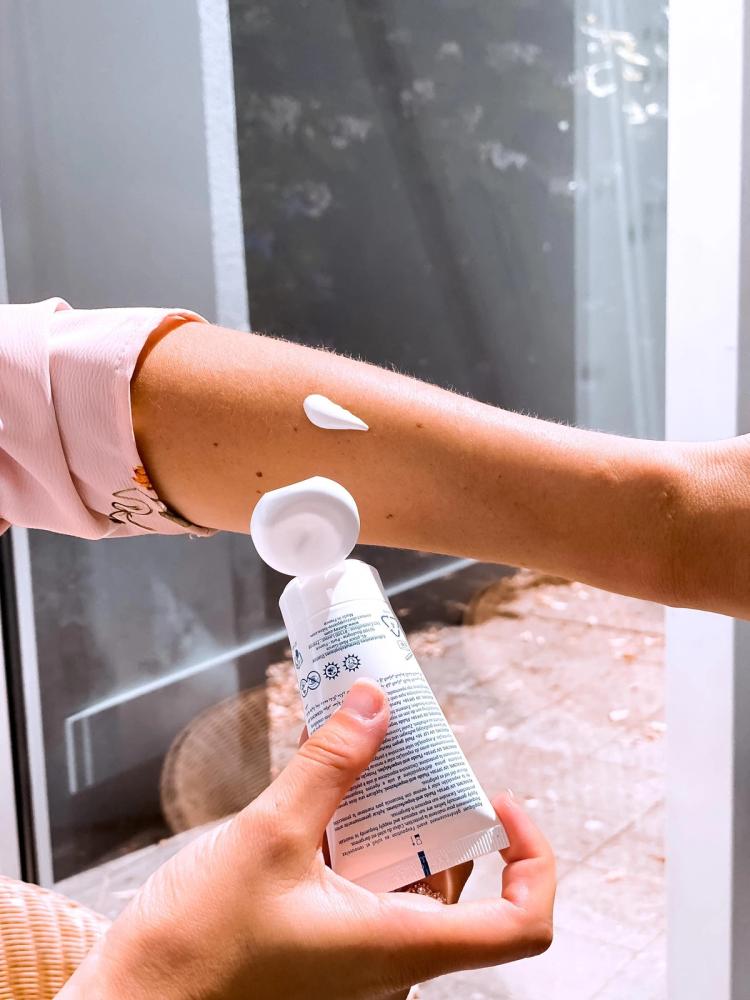
"SPF is your BFF", a tag line you've certainly heard before. But what exactly is SPF, and does SPF alone protect you sufficiently against the sun? To be completely correct, we should use the word sunscreen instead of SPF. In my daily practice, I am routinely asked about what exactly to look out for when picking sun protection. But what exactly does it protect us from? What is ultraviolet radiation, blue light, and where does it come from?
Types of light
The sun provides us of ultraviolet (UV) radiation and visible light, both having a significant impact on our skin.
☼ We can subdivide UV radiaton into UV-A, UV-B and UV-C radiation. UV-A and UV-B rays both affect our skin in a different way. UV-C does not reach the Earth's surface.
UV-B consists of a rather short wavelength and is the main cause of sunburn and skin cancers. Therefore, most sunscreens mainly focus on UV-B radiation.
UV-A consists of a longer wavelength and also contributes to skin cancer and premature aging, and has the ability to pass through glass.
☼ New kid on the block is blue light. Blue light is a colour in the visible light spectrum that can be seen by the human eye, and generally comes from TV, smartphone or laptop screens. Unlike UV rays, it can’t burn you, but it can age your skin indirectly via the formation of free radicals and therefore it can speed up the aging process and cause pigmentation.
Good to know: Effects of UV radiation and visible light on human skin depend on pigmentation. It seems that light skin tends to be more susceptible to UV-induced skin damage, while dark skin suffers more from visible light-induced damage.
Types of sunscreen
In general, there are two types of sunscreen: mineral (physical) and chemical sunscreen.
Mineral sunscreens form a protective layer on our skin, preventing UV rays from hitting it. They usually contain ingredients like zinc oxide and titanium dioxide, small particles that have been recognized as safe and effective. Protection is immediate. This type of sunscreen is ideal for people with sensitive skin, with skin conditions like contactallergy, rosacea or melasma, as it tends to irritate less. Because mineral sunscreen is sometimes thick, it may contribute to breakouts in people prone to acne. The latter is a subject I'll cover in another article.
Chemical sunscreens do allow UV rays into the skin, turning it into non-damaging wavelengths of light or heat, a process that takes place in our skin by chemicals like oxybenzone, avobenzone, octisalate, octocrylene, homosalate, and octinoxate. Recommendations based on the latest studies recommend avoiding chemical sunscreens with oxybenzone. This form of synthetic estrogen may disrupt hormones and cause allergic skin reactions. There is a waiting time before protection of around 20-30 minutes. Also does it harm coral reefs. An important sidenote in that matter, is that not applying sunscreen is still more harmful to you in the long run than the possible absorption of any small particles.

What is SPF and PA? What should I look for when picking sunscreen?
SPF, meaning Sun Protection Factor, measures sunscreen protection from UV-B rays only. PA is short for Protection Grade of UV-A, and thus only measures U-VA protection. As you now know, this is given their individual function, an important distinction!
In general:
♥ Always go for an SPF of 30 or higher (preferably, SPF50). Any sunscreen with SPF below 15 only protects against sunburn, not skin cancer or skin aging.
♥ Choose a sunscreen with “broad spectrum” protection, this means they protect you against both UV-A and UV-B rays.
♥ Especially important if you have dark skin: the best defence against blue light are topical antioxidants. Look for a sunscreen that’s got a high sun protection factor, promises broad spectrum protection and includes antioxidants like vitamin C and E.
→ Follow me on Instagram (@thesacred.skin) for a summary of all evidence-based skin care research.



